
Skoda Citigo Hatchback (2012-2019) engines, drive and performance

- Two 1.0-litre petrols provide the power
- Choice of 60 or 75hp power ouputs
- Both need working hard, but good performers
There’s one three-cylinder, 1.0-litre petrol engine providing the power in the Citigo, available in one of two power outputs: 60hp or 75hp.
The base 1.0-litre three-cylinder petrol produces just 60hp and 95Nm of torque, driven through its front wheels via a five-speed manual gearbox.
Performance for this engine is leisurely, taking 14.4 seconds to complete the 0-62mph jaunt, and it will soldier on to a top speed of 101mph.
These figures shouldn’t be a concern for most buyers though. Granted, getting up to motorway speeds does take some patience and certainly gives the Citigo a workout, but the process is enjoyable thanks to an engine sound that makes it feel like a shrunken Porsche thanks to a great three-cylinder thrum.
It’s refined and relaxed when you don’t ask too much of it, though, making it perfectly fit for purpose.
If you do regularly venture away from busier towns and cities, it’ll be worth considering the 75hp of the same engine. The torque figure is the same at 95Nm, so you’ll still need to work it hard when overtaking, but it could be worth it for the extra power.
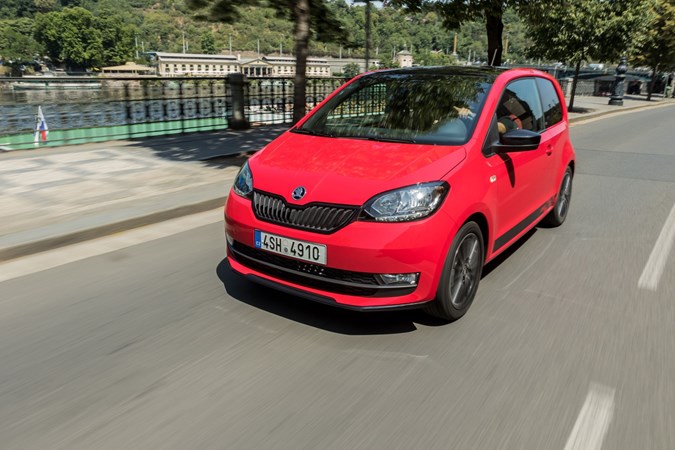
It’s just as eager to be revved though, which means it’s enjoyable to make progress and, with a 0-62mph time of 13.5 seconds, it is slightly quicker. It’s still no fireball though, so we’d recommend trying both before you buy to see which better suits your needs and which you prefer. It’s worth noting that 75hp version is only available in SE L trim, though, which could limit its appeal to those wanting to keep costs to a minimum.
In both outputs, you’ll need to enjoy using a manual gearbox, as you’ll regularly find yourself changing down a gear or two to successfully make it up a hill without slowing down – the Citigo can get caught out in these situations. The throw of the lever is very light indeed, but it’s not as slick-shifting as Skoda’s other models.
For buyers looking for an automatic gearbox, an ASG automated manual offering was available, but disappeared from price lists in 2018. With a 0-62mph time of 16.7 seconds, you’ll need the patience of a saint for quick getaways, while top speed maxes out at 101mph.
Of real interest is the forthcoming Citigo-e iV – an all-electric version of the Citigo. We’ve yet to drive it, but Skoda says it will offer 165 miles of range on a full charge, and thanks to the 81bhp electric motor it’ll also be the fastest model available.
Ride and handling
- Citigo offers very tidy handling
- Body control is good
- Steering is light but lacking in feel
The Citigo is primarily aimed at drivers who spend a lot of time in city centres or surrounding areas and so it is extremely versatile and easy to drive.
The steering is light and direct, but you don’t get much in the way of feedback through the wheel. However, carrying out manoeuvres such as reverse parking and three-point turns is easy since the car has a small turning circle of just 9.8 metres; perfect for navigating city streets.
The excellent lower-speed handling can mean sacrifices at higher speeds, though. When cornering at higher speeds that light steering isn’t particularly confidence-inspiring, but it’s unlikely many Citigo drivers will be driving like they’re on a rally stage.
There is a little bit of body roll in the corners and, for the most part, the Citigo feels very composed and balanced, making it feel like a much bigger car to drive than it really is.
The Monte Carlo version is lower and stiffer than the standard Citigo, so it’s blessed with even better handling and less body roll in bends. There is a trade-off, of course, in terms of ride quality, which comes down to how much you enjoy throwing your Citigo around corners.


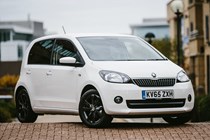

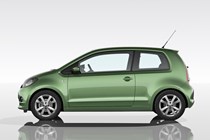

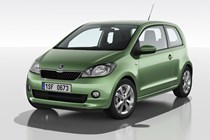

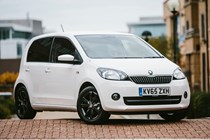
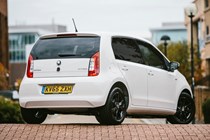
.jpg)
.jpg)
.jpg)
.jpg)
.jpg)
.jpg)
.jpg)
.jpg)
.jpg)
.jpg)
.jpg)
.jpg)



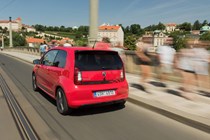


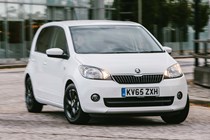
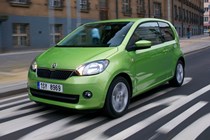
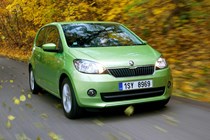

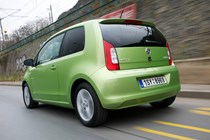
.jpg)
.jpg)
.jpg)
.jpg)
.jpg)
.jpg)
.jpg)
.jpg)
.jpg)
.jpg)
.jpg)
.jpg)
.jpg)
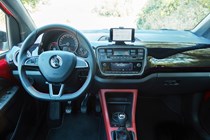
.jpg)

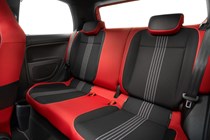

.jpg)
.jpg)
.jpg)
.jpg)
.jpg)
.jpg)
.jpg)
.jpg)
.jpg)
.jpg)
.jpg)
.jpg)
.jpg)
.jpg)
.jpg)
.jpg)
.jpg)
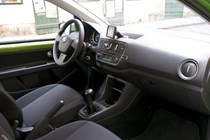
.jpg)

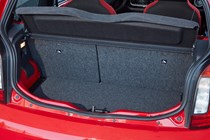
.jpg)
.jpg)
.jpg)
.jpg)
.jpg)
.jpg)

.jpg)
.jpg)
.jpg)








.jpg?quality=50)
.jpg?quality=50)
.jpg?quality=50)
.jpg?quality=50)
.jpg?quality=50)
.jpg?quality=50)
.jpg?quality=50)
.jpg?quality=50)
.jpg?quality=50)
.jpg?quality=50)
.jpg?quality=50)
.jpg?quality=50)











.jpg?quality=50)
.jpg?quality=50)
.jpg?quality=50)
.jpg?quality=50)
.jpg?quality=50)
.jpg?quality=50)
.jpg?quality=50)
.jpg?quality=50)
.jpg?quality=50)
.jpg?quality=50)
.jpg?quality=50)
.jpg?quality=50)
.jpg?quality=50)

.jpg?quality=50)



.jpg?quality=50)
.jpg?quality=50)
.jpg?quality=50)
.jpg?quality=50)
.jpg?quality=50)
.jpg?quality=50)
.jpg?quality=50)
.jpg?quality=50)
.jpg?quality=50)
.jpg?quality=50)
.jpg?quality=50)
.jpg?quality=50)
.jpg?quality=50)
.jpg?quality=50)
.jpg?quality=50)
.jpg?quality=50)
.jpg?quality=50)

.jpg?quality=50)


.jpg?quality=50)
.jpg?quality=50)
.jpg?quality=50)
.jpg?quality=50)
.jpg?quality=50)
.jpg?quality=50)

.jpg?quality=50)
.jpg?quality=50)
.jpg?quality=50)